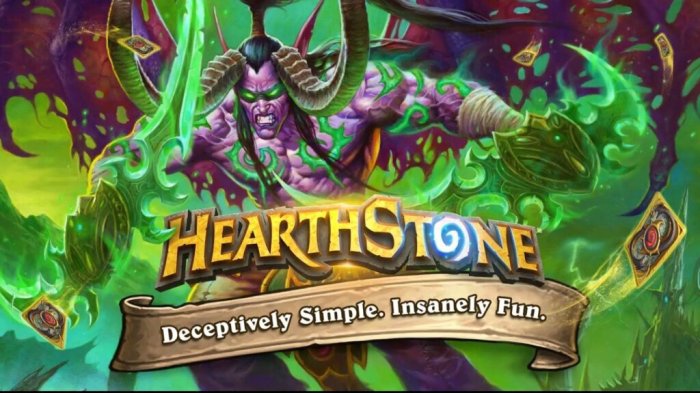
Ever wondered what makes a digital card game truly
-pop*? Beyond the flashy artwork and addictive gameplay, there’s a whole universe of factors that propel a game to the top of the charts. From millions of players battling it out to the millions of dollars generated in revenue, we’ll dive into the world of digital card games, exploring what makes them tick and examining the colossal success of Hearthstone, the undisputed king (for now!).
Prepare for a whirlwind tour of strategic card slinging, cunning marketing, and the fierce competition that defines this exciting genre!
We’ll unpack the metrics that define popularity – player counts, tournament prize pools, community buzz, and even the subtle art of monetization. We’ll analyze Hearthstone’s winning formula, dissecting its gameplay, community engagement, and clever financial strategies. Then, we’ll cast our net wider, exploring other contenders vying for the digital card game crown and seeing how they stack up against the Hearthstone juggernaut.
Get ready to shuffle up and deal in!
Defining “Popularity” in Digital Card Games

Measuring the popularity of a digital card game isn’t as simple as counting players. While a high player base is certainly a strong indicator, a truly comprehensive understanding requires a multifaceted approach, considering several key metrics. These metrics, however, can be surprisingly nuanced and challenging to interpret accurately.Popularity in the digital card game arena is a complex beast, influenced by a variety of factors beyond just raw player numbers.
We need to delve into several key metrics to paint a complete picture.
Metrics for Measuring Popularity
Several factors contribute to a digital card game’s overall popularity. These metrics, while individually informative, provide a more robust picture when considered together. Ignoring one could lead to an incomplete or even misleading assessment.
- Player Count: This is the most straightforward metric – the total number of registered or active players. High player counts suggest a large and engaged audience. However, this number alone doesn’t tell the whole story; a game with millions of inactive accounts is less popular than one with a smaller but highly active player base.
- Revenue Generated: This reflects the game’s financial success and player willingness to spend money on in-game purchases (cards, cosmetics, etc.). High revenue suggests a strong and monetized player base, though it doesn’t necessarily correlate directly with overall player numbers. A game with a smaller, highly spending player base might generate more revenue than a game with a larger, less spending player base.
- Tournament Participation: The number of players participating in organized tournaments, both online and offline, indicates the competitive scene’s health and engagement. A thriving competitive scene often translates to higher player retention and a more passionate community.
- Community Engagement: This encompasses various aspects, including social media activity (likes, shares, comments), forum participation, streaming viewership, and the overall vibrancy of online discussions. A highly engaged community suggests a loyal and dedicated player base, which is crucial for long-term success.
Variations Across Games and Platforms
The relative importance of these metrics can vary significantly across different games and platforms. For example, a free-to-play game on mobile might prioritize player count and revenue, while a premium game on PC might focus more on tournament participation and community engagement. The platform itself also plays a role; a game on Steam might rely more heavily on reviews and community feedback than a game on a mobile app store.For instance,
- Hearthstone*, with its massive player base and substantial revenue, excels in player count and revenue, while a smaller, more niche game like
- Eternal* might have a smaller but highly engaged and competitive community, prioritizing tournament participation and community engagement.
Challenges in Accurately Measuring Popularity
Accurately measuring popularity presents several challenges. Data from different sources might not be directly comparable, and some metrics, like true active player counts, are often proprietary and not publicly released. Furthermore, botting and other forms of manipulation can artificially inflate certain metrics, making accurate assessment difficult. The definition of “active” player also varies; is it someone who logs in daily, weekly, or monthly?
This lack of standardization makes direct comparisons between games challenging. Finally, cultural factors and regional differences can also skew results; a game incredibly popular in one region might be relatively unknown in another.
Hearthstone’s Success Factors

Hearthstone’s meteoric rise to become one of the most popular digital card games can be attributed to a potent combination of accessible gameplay, clever marketing, and a sustainable monetization model. Its success wasn’t accidental; it was the result of careful design choices and strategic business decisions that resonated deeply with a broad player base.Hearthstone’s intuitive gameplay and accessible mechanics played a crucial role in its widespread adoption.
The game streamlined the complex mechanics of collectible card games (CCGs) into a more digestible format, making it easy for newcomers to pick up and play, while still offering depth and strategic complexity for seasoned veterans. This balance of accessibility and strategic depth is a key factor in its enduring appeal.
Simplified Gameplay Mechanics
Hearthstone significantly simplified the complexities often associated with traditional CCGs. The core mechanics, such as mana management, card draw, and minion placement, are relatively easy to grasp, even for players unfamiliar with the genre. The game’s auto-battler style minimized the need for complex calculations and manual bookkeeping, allowing players to focus on strategic decision-making rather than tedious rule-based calculations.
This streamlined approach lowered the barrier to entry, attracting a much wider audience than more complex CCGs. For example, the clear visual representation of mana crystals and the simple card effects made it instantly understandable, even without a detailed tutorial.
Effective Marketing and Community Building
Blizzard Entertainment, Hearthstone’s developer, implemented a multi-pronged marketing strategy that leveraged existing Blizzard franchises and fostered a strong community. The use of familiar Warcraft characters and lore attracted existing Blizzard fans, while the game’s accessibility brought in a new generation of players. Furthermore, Hearthstone actively cultivated a vibrant community through regular updates, engaging esports tournaments, and consistent communication with the player base.
This fostered a sense of loyalty and belonging, encouraging players to remain engaged with the game over the long term. For instance, the regular release of expansion sets kept the game fresh and exciting, while the Hearthstone Championship Tour (HCT) provided a platform for competitive play and attracted a large viewership.
Monetization Model Comparison
Hearthstone’s monetization model, while based on the “free-to-play” model, differs from some competitors in its balance between accessibility and incentivized spending. Unlike some games that heavily rely on pay-to-win mechanics, Hearthstone primarily offers cosmetic items and optional card packs for purchase. While powerful cards can be acquired through purchases, the game’s design allows players to progress significantly through gameplay alone.
This contrasts with some CCGs that require significant financial investment to be competitive at higher levels. For example, while purchasing card packs increases the chances of obtaining powerful cards, the game provides enough free resources through daily quests and rewards to allow for steady progression, making it more accessible to free-to-play players compared to games with a more aggressive pay-to-win structure.
Final Review
So, there you have it – a glimpse into the vibrant and fiercely competitive world of digital card games! From the strategic depth of gameplay to the crucial role of community and clever monetization, the path to success is paved with careful planning and a healthy dose of luck. While Hearthstone currently reigns supreme, the landscape is constantly shifting, with new challengers emerging and established players innovating to maintain their position.
The future of digital card games is as unpredictable as a well-shuffled deck, promising endless entertainment and exciting possibilities for players and developers alike. Grab your cards, and let the games begin!
FAQs
What are some alternative digital card games similar to Hearthstone?
Gwent, The Witcher’s card game, offers a unique take on strategy; Magic: The Gathering Arena brings the classic tabletop experience online; Eternal offers deep deckbuilding options; and Legends of Runeterra integrates with the League of Legends universe.
How much does it cost to play these games?
Most offer a free-to-play model with optional in-app purchases for cosmetic items or card packs. The cost varies greatly depending on how much you choose to spend.
Are there competitive scenes for these games?
Absolutely! Many digital card games have thriving esports scenes with regular tournaments and substantial prize pools. Hearthstone, in particular, has a very established and well-supported competitive community.




